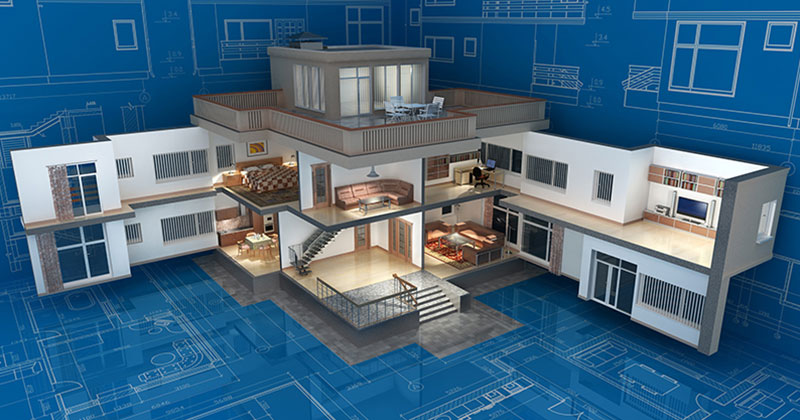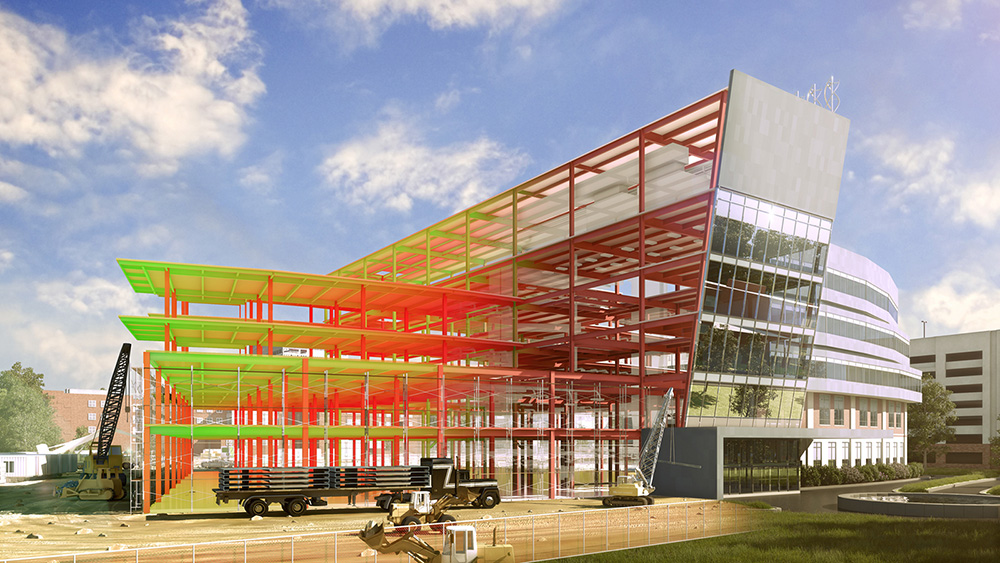
CONSTRUCTION SPECIALTY INVESTIGATIONS (CSI)
CSI (a division of Lazok Industries) has partnered with Core Structure Group (Jason Hale) and offers onsite commercial building assessments, which is a means of collecting engineering information and data concerning the existing topography, structure and its components vital to investment and finance decision making. This in turn determines current real time defects and/or work which may be required to keep a building functioning properly.
CSI and CSG have provided PCA’s and SCA’s on numerous structures in the western United States. These have included historic buildings, courthouses, retail centers, shopping malls, restaurants, multi-family units, playgrounds, hotels, bridges, retaining walls as well as municipal, educational, industrial, commercial and residential properties.
Upon request, we also perform specialty inspections for local planning and zoning agencies, insurance companies or municipalities regarding non-permitted projects or failing projects.
After the initial assessment and diagnosis is made, corrective action may be required. If so, a remediation plan is created which then can be implemented and managed through Lazok Industries.
WHAT SETS US APART:
- Over three decades of field experience with inspections and construction of commercial and residential properties
- Inspections performed to ASTM E-2018 standards
- Professional evaluations with Licensed Contractors, Engineers, Registered Architects and LEED Certified Project Managers
We breakdown each evaluation into THREE uniquely specific phases which are:
- Building Defects Investigation Assessments (Phase 1)
- Forensics Tools / 3D Modeling and Diagnostics (Phase 2)
- Environmental Site Evaluation (Phase 3)
ASSESSMENT (PHASE 1)
Identify the problems. This phase usually involves one or more site visits to view reported problems or to review the building or buildings for existing or potential problems. A building assessment is highly recommended to anyone considering the purchase of a commercial building.
Property Condition Assessments (PCA’s) evaluate the condition of a property and assess it’s potential risk. The report is used to assist realtors, property management companies, developers, lenders and investors in the decision making process when purchasing, leasing, selling, investing and managing properties. Initial property assessment includes (when applicable) aerial drone footage.
KEY BENEFITS INCLUDE:
- Secure investment value with a thorough understanding of property condition before purchase
- Consultation to discuss report findings and aid with investment and planning decisions
- Monetary savings through preventative maintenance recommendations
- Insurance compliance and help to prevent liability exposure
Structural Condition Assessments (SCA’s) are focused on the structural components, lifetime age condition and overall integrity of the building. This report may be used to identify structural deficiencies or defects within the structure that may impact the usable lifespan of the property. Using state of the art ground penetrating radar detection, laser measurements and aerial drone footage our services are in depth and complete. We also include consultation to discuss report findings.
KEY BENEFITS INCLUDE:
- Find and identify major structural issues beyond what the eye can see. Prevent costly or dangerous building issues and avert long term safety concerns which also alleviates unforeseen issues and conflicts before they can occur
- Options and solutions for long term sustainability for properties
- Assists in redesign, remodel and improvement planning
BUILDING ENVELOPE AND SYSTEMS
The building envelope is the part of the building which keeps the weather out and the heat (or cooling) in. This includes the roof, the walls and the foundation as well as skylights, windows and exterior doors. Our inspection of the envelope is usually the single most significant part of the assessment and the one which solicits the greatest number of calls from building owners and managers. Paint failures, leaks and smells of mold are often the early indicators that there are construction or design problems with the envelope.
MECHANICAL AND ELECTRICAL SYSTEMS
An assessment of the mechanical systems will determine if they are functioning properly and have been appropriately maintained. If necessary, a mechanical engineer can assist in this assessment to determine whether the mechanical system is appropriately designed to serve the building and if it is the best system for present and future use.
STRUCTURAL SYSTEMS
Structural failure in a building is often readily seen. Diagnosing whether failure is caused by foundation settling; under-structuring; overloading of the building frame or by structural degradation due to rot, insects or alteration is more difficult. Often structural issues have not yet revealed themselves in building failures and can be addressed before they do—such as in missing truss bracing and improper joining of trusses or splits in the timber truss of older buildings.
ENERGY INEFFICIENCIES
Heating, cooling and lighting a building all require an input of energy. All buildings, old ones in particular, require a great deal of energy to operate. There are almost always things which can be done to improve a building’s energy efficiency. These include air sealing, adding or correcting insulation, improving mechanical systems and improving operation of existing systems. Determining which improvements are most energy and cost efficient is a part of a building assessment.
CODE COMPLIANCE
Sometimes the problems that we look at are not physical problems with a building, but rather are code compliance issues. Often these relate to citations that the Owner has been given regarding specific aspects of non-compliance. Sometimes these are related to proposed changes in use that a new owner of a building discovers only after they have purchased it.
ACCESSIBILITY LAWS & CODES
Multiple codes regulate the accessibility requirements of a building and its site. Review of these requirements are part of the building assessment. The codes are subject to change on both state and federal levels.
BUILDING CODES
Many codes regulate the construction and use of a building. If changes in use or additions are considered, a review for code compliance should be performed. Current building codes are complex and are often misunderstood. Commercial buildings are required to meet current building code requirements.

FORENSICS & DIAGNOSTICS (PHASE 2)
Find the Cause. Forensics/Diagnostics is research and investigation to identify the causes of the problems discovered during the assessment and additional investigation to uncover the extent of the problems.
IDENTIFY AIR LEAKAGE
Air getting into a building through cracks and unsealed construction joints can lead to heating difficulties, occupant comfort complaints and pipe freeze-ups. Excessive or uncontrolled exfiltration can lead to heating difficulties as well as ice damming.
IDENTIFY IMPROPER INSULATION
Proper installation of insulation is essential if it is to perform as desired. Gaps, compacted or missing insulation in a wall allows excessive convective and conductive heat transfer.
IDENTIFY INEFFICIENT HEATING AND COOLING
The mechanical systems in a building consume significant energy. If the system is not efficient in its manufacture, design, installation or condition, much energy is lost. This energy loss is wasteful and very expensive. During the forensic/diagnostic phase, the Mechanical systems are examined and analyzed for condition, appropriateness of design and efficiency.
IDENTIFY INEFFICIENT LIGHTING AND EQUIPMENT
Lighting and control technology has changed in recent years. It is possible to significantly reduce power costs by increasing fixture and lamping efficiencies and improving control regimens. Improving daylighting, though often beyond the scope of a building evaluation, may also reduce the lighting power requirements.
IDENTIFY MOISTURE INFILTRATION
The most significant and most damaging type of building performance problem is related to moisture infiltration. The moisture can come from snow, rain, or condensation and is most often made worse by wind and air pressure differences. In many cases, the problems can be traced to poor workmanship during construction. Deferred maintenance and design errors also contribute. Moisture in the structure can lead to mold, rot, material deterioration and delamination as well as persistent failure of finishes.
Rain and snow water as well as ground water must be managed at all components of the building envelope. These include the roof and walls but also the individual components of the envelope and the site surrounding the building.
IDENTIFY FLASHING DEFECTS
Missing, mis-installed and mis-specified flashings are often the culprit in leaks at openings and trim. The damage caused by flashing errors can often be undetected until significant damage has been done.

ENVIRONMENTAL (PHASE 3)
Asbestos, mold, radon and abandoned underground tanks are environmental contaminants. No building is maintenance free. Proper maintenance of HVAC systems is required for efficient operation. Proper maintenance of the building envelope—painting, replacing worn or damaged components, addressing infiltration (air, water, insect) in a timely manner are all required if a building is to be cost effective to operate and is to last many years. The assessment of maintenance problems is the first step toward developing maintenance regimens or getting existing ones back on track. Anyone who has an investment in a building or is considering investing in a building should know the condition of the investment. A building assessment can identify potential problems and identify ways to improving or preserving that investment by thoroughly inspecting their property.
MAINTENANCE
Which must be addressed for safe building occupancy, permitting and when title is conveyed.
AIR QUALITY, SOILS, HAZARDOUS MATERIALS
Some environmental hazards may make themselves known visually or through odors. Others may only be discovered through research or property history. Many times these issues become significant when renovations, additions or property transfers are considered.
MOLD IDENTIFICATION
Mold spores require water and food to grow. It’s impossible to eliminate the spores. Eliminating food is also often impossible. Most often the approach is to eliminate the source of water. Mold can be cleaned off surfaces, but if the source of water or the source of food is not eliminated, it will return.
To learn more specifics about the services CSI Investigations can offer or to discuss how we can work with you in regards to commercial building assessments, please submit the following form.
Thanks for visiting Lazok Industries. We look forward to working with you.